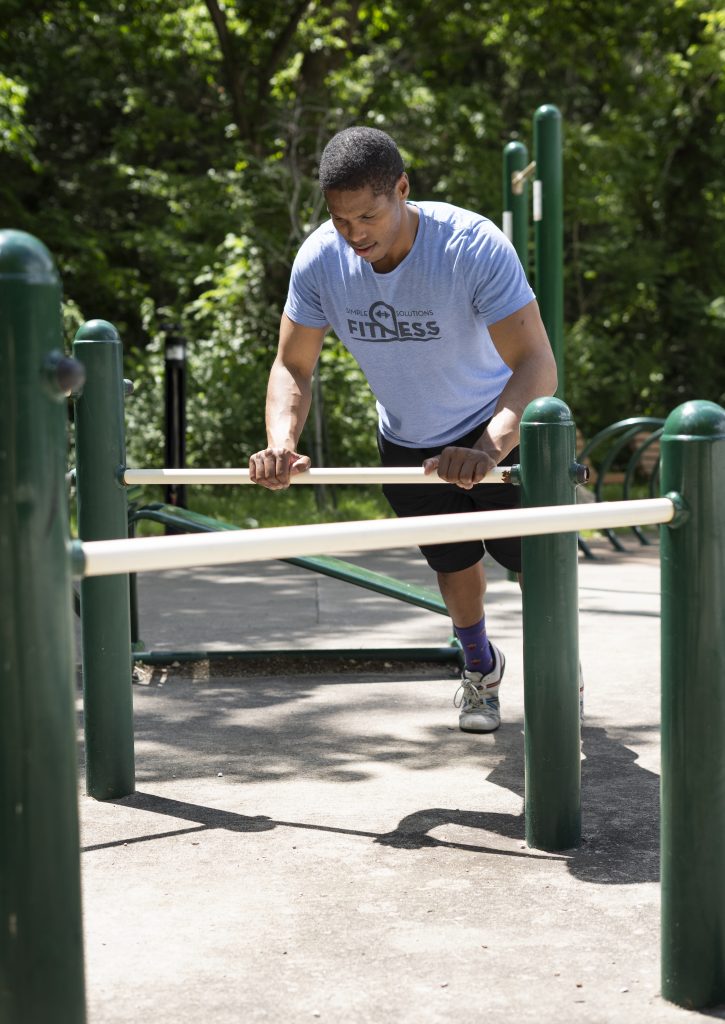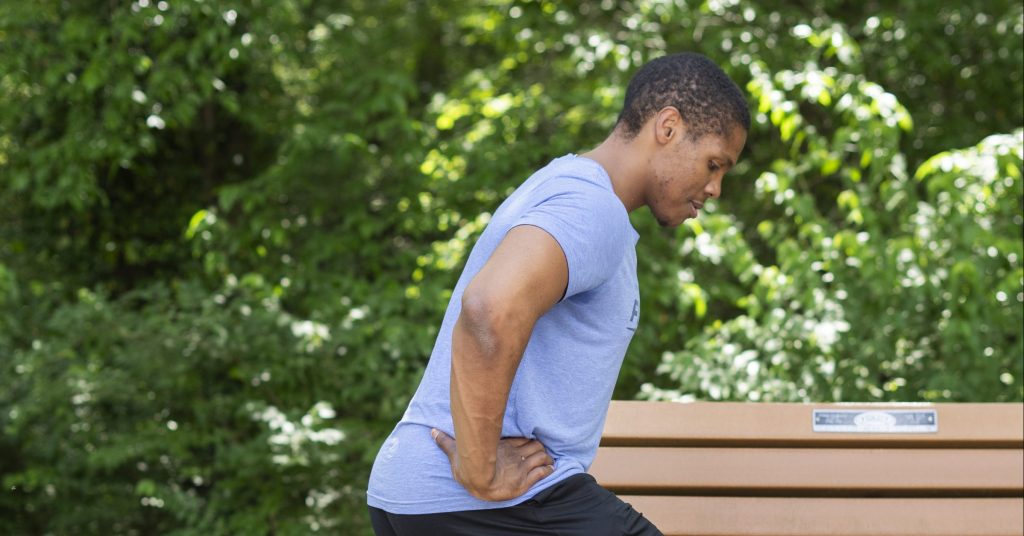Photos by Ava Kitzi
I hit the trails every weekend in Columbia with my girlfriend to connect and get a little bit of a boost. Some research shows that regular physical activity like walking may help improve your mood. Think of a 15-minute walk or an outdoor exercise routine. If you’re looking for a good summer activity, you might find yourself on Columbia’s trail system too — it was ranked as the second- best urban trail in the nation by USA Today’s 10 Best Readers’ Choice Awards in 2016.
In this article, we’re going to show you an exercise routine that you can perform at home or at the outdoor exercise station at Martin Luther King, Jr. Memorial located at 800 W. Stadium Blvd. To start, we’ll cover some science on strength training. Following, you’ll find a routine that you can adapt to exercise at home or outdoors.
Some people like to use exercise as meditation. Your only goal is to stay consistent and try to improve yourself over time. Fit activity into your schedule however you see fit.
A balanced regiment could look like:
- Monday — strength training
- Tuesday — cardio
- Wednesday — rest
- Thursday — strength training
- Friday — yoga
- Saturday — walk to Twin Lakes
- Sunday — rest
To teach you some exercise lingo, the best routines spell out these details:
- Volume — how many sets of exercises you perform.
- Intensity — how hard your training is or how much you lift.
- Frequency — how often you’re training each muscle or move.
- Exercise selection — the exercises you perform each week.
- Exercise order — the order you perform exercises.
- Rest — how long you rest between sets, exercises and workouts.
- Tempo or velocity — how fast you can move.
You’ll benefit from strength training at a minimum of twice per week. While you don’t need equipment, performing bodyweight-only exercises limits progress to increasing difficulty by adding reps, changing tempos or moving onto more advanced variations. This is why the outdoor exercise station is so useful. Be sure to cover your primary movement patterns each week:
- Squatting — bodyweight squats, goblet squats.
- Hip hinging/extension — glute bridges, hip thrusts and RDLs.
- Lunges — split squats, lunges, step- ups and step-downs.
- Upper body pushing — push-ups and overhead pressing.
- Upper body pulling — bent-over rows, chin-ups and pulldowns.
- Loaded carries and farmers’ walks — carrying a heavy bucket on one side.

Various core and accessory exercises can be added in as needed. The goals of your routine shape the exercises you choose, the form and the order you perform them.
A rep is performing an exercise once, sets are groups of reps. An example would be three sets of 6-12 reps. The research says to aim for 10-20 sets per muscle group per week to start. For example, three sets of lunging, three sets of bridges, and four sets of squats would be doing enough exercise for your glutes. If your goal is strength, two-thirds of your sets should be in the one to six rep range, with the remainder in the 6-30 rep range. If your goal is to get into better shape, two-thirds of your sets should be in the 6-12 rep range with the remainder in the one to five and 12-30 rep ranges. Generally, rest one to three minutes between sets.
Work with the time you have, you can perform all your sets over two workouts per week. For example two 45-minute workouts or three 30-minute routines.
Before every workout, warm-up. Get your blood flowing by performing a warm- up. Walk for five to seven minutes before exercising or try dynamic stretches.
WORKOUT 1:
- Bodyweight squat — 2-4 sets of 8-15 reps
- Inverted row — 2-4 sets of 6-12 reps
- Single-leg Romanian deadlift — 2-4 sets of 8-12 reps on each side
- Hands-elevated or bodyweight push-ups — 2-4 sets of 6-12 reps
- YTA raise — 2-4 sets of 12-15 reps
- Standing hip abductions — 2-4 sets of 20-30 reps on each side
WORKOUT 2:
- Reverse lunge — 2-4 sets of 8-12 reps on each side
- Chin-up or flexed arm hang — 2-4 sets of 6-12 reps or 5-15 seconds
- Glute bridge — 2-4 sets of 15-30 reps
- Pike push-ups or hands-elevated pike push-ups — 2-4 sets of 6-12 reps
- Seated row machine — 2-4 sets of 12-15 reps
- Clamshells — 2-3 sets of 20-30 reps on each side
After every workout, cool down and stretch. You may perform traditional reach and hold static stretching after your workouts. Each stretch should be held for 30-60 seconds.
Steven Mack owns Simple Solutions Fitness, a private personal training studio in Columbia. He’s a Certified Strength and Conditioning Specialist, a former Mizzou athlete, and is currently pursuing a Doctorate in Physical Therapy from the University of Missouri. He’s passionate about fitness and helping others and also coaches for Stronger By Science, helping people understand and implement exercise and nutrition research.



















